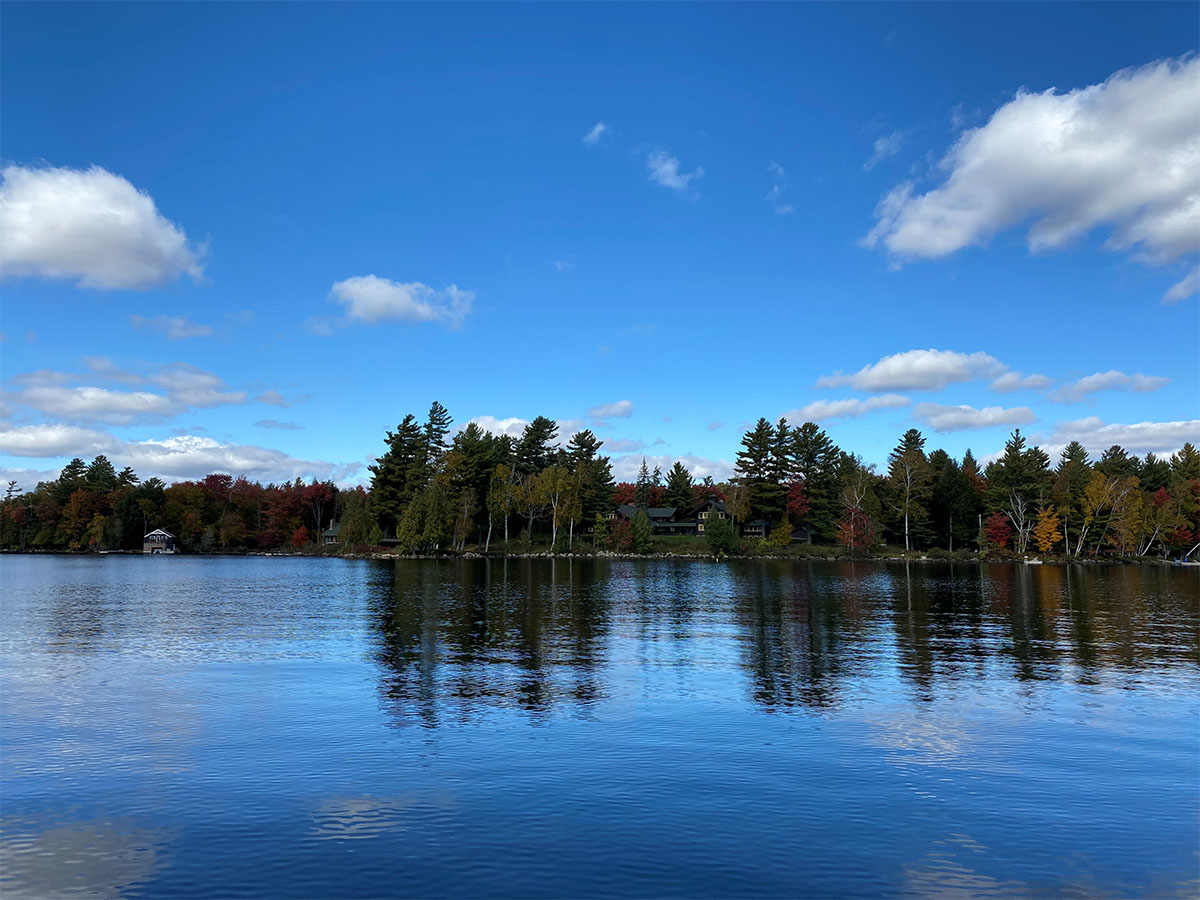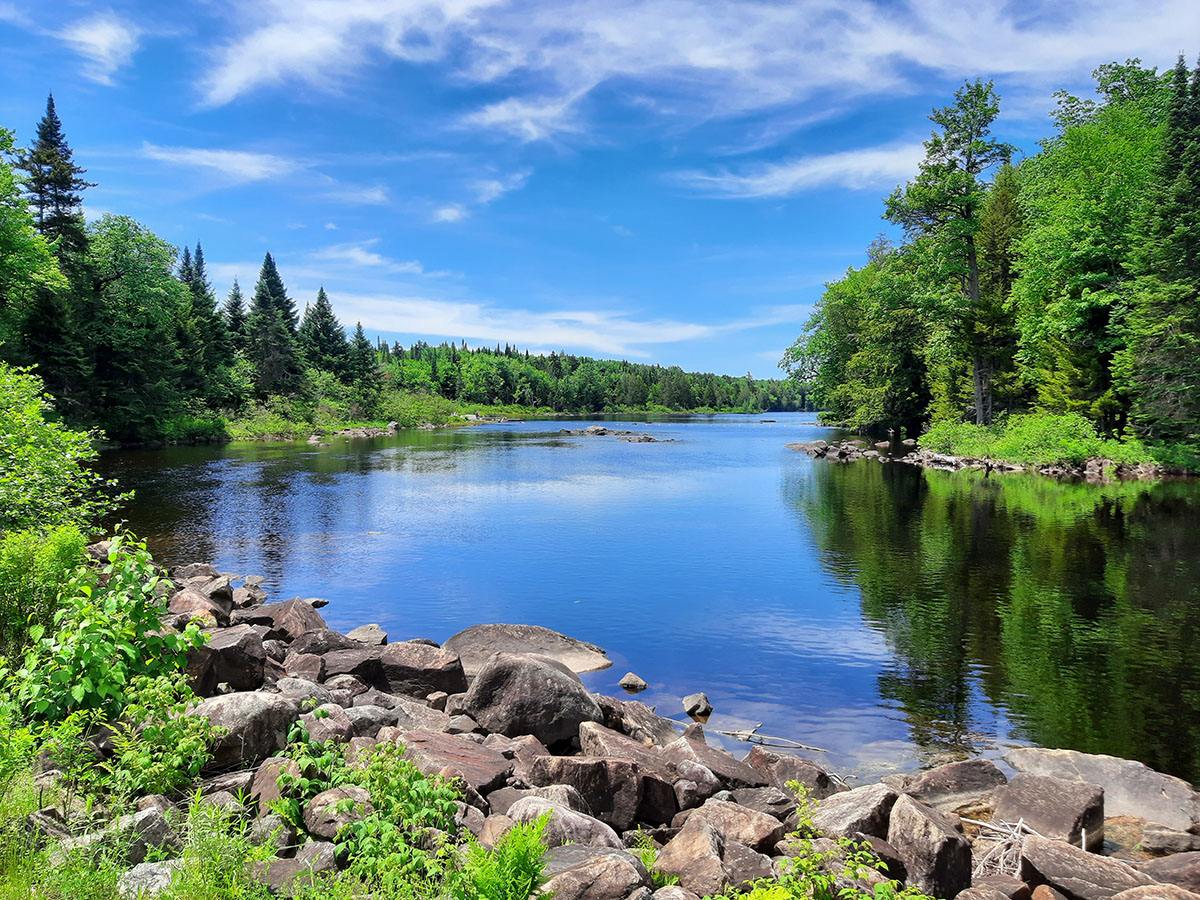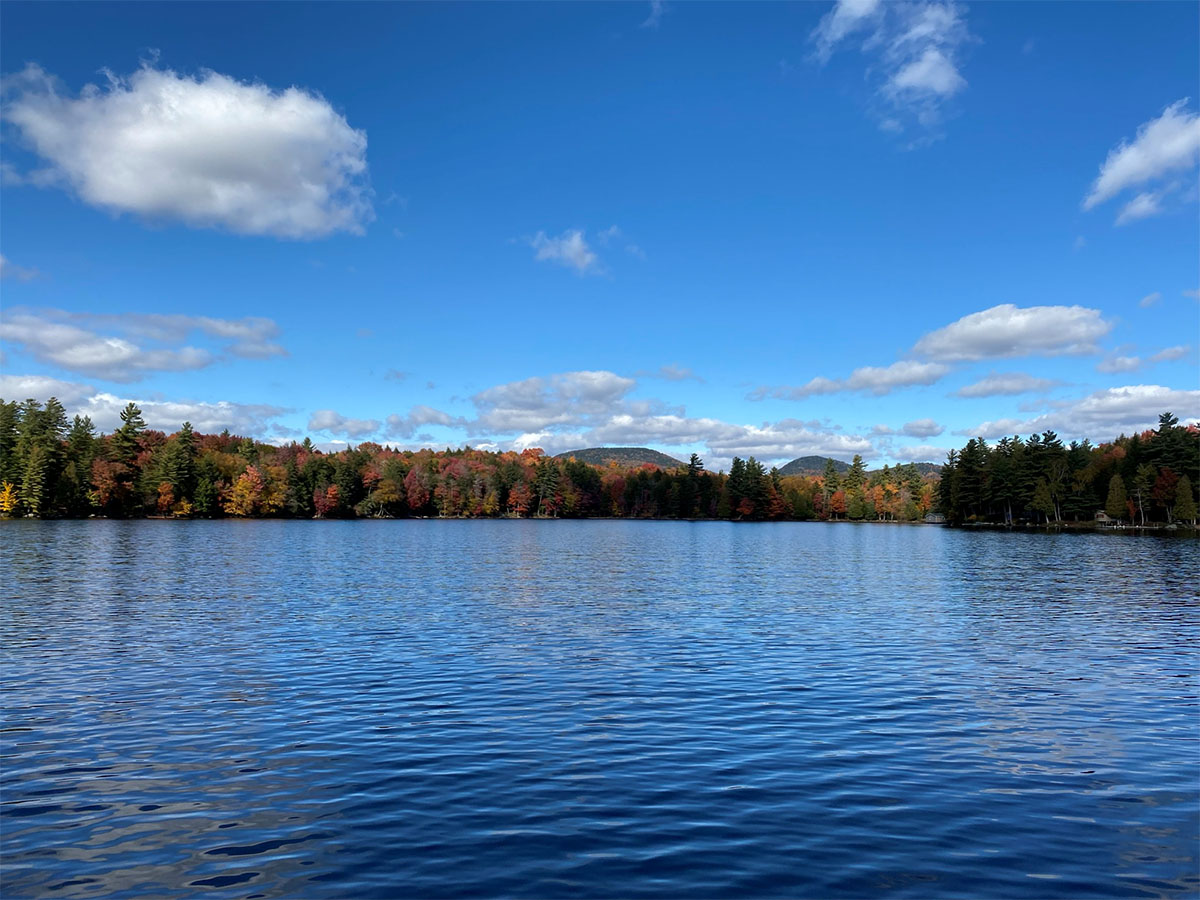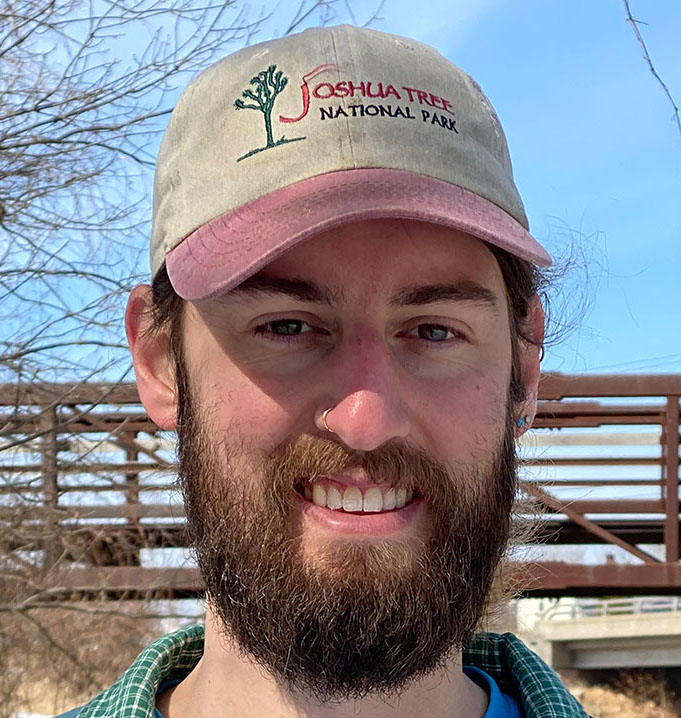
Reflections on Water: Better Protecting the Raquette Lake Watershed
By: Blake Neumann – Adirondack Council Clean Water Advocate
Monday, January 31, 2022
In mid-January, conservation practitioners, scientists, and industry representatives convened at the virtual annual meeting of the Northeast Aquatic Plant Management Society to hear updates from peers around the Northeast and beyond. I was representing the Adirondack Council in my role as Clean Water Advocate, looking to bring some more insight and knowledge to protecting the Raquette Lake watershed and the waters of the Adirondacks.
 Looking across North Bay at the Great Room of the old Carnegie Camp on North Point
Looking across North Bay at the Great Room of the old Carnegie Camp on North Point
The Presentations
The meeting opened with revisions to the North America Aquatic Wetland and Plants manual, followed by the latest research on topics such as harmful algal blooms (HABs), nutrient loading, aquatic invasive species and, you guessed it, aquatic plant management.
Some of the more memorable presentations included the Nantucket Land Council’s effort to deploy air monitoring equipment and sample aerosolized cyanobacterial toxins from harmful algal blooms; the State of Vermont’s painstaking management battle in controlling water chestnut in Lake Champlain; and a joint effort carried out by North Carolina State University and SOLitude Lake Management on Chautauqua Lake in western New York to survey aquatic plant populations, chemically treat Eurasian watermilfoil and curly leaf pondweed populations, and monitor the recovery of the lake.
Adirondack Implications
During these sessions, I was consistently reminded that in the Adirondacks, we are fortunate not to need to be concerned with airborne cyanotoxins, much less (for the most part) large HABs that prevent recreating in a lake for days, weeks, or months at a time. We have the advantage of being able to focus our attention on managing a more limited number of invasive species in our lakes and rivers, versus having to manage for various aggressive invaders simultaneously, as is the case in Chautauqua Lake. Also, development pressures are somewhat mediated by a complex matrix of regulatory authorities and land-use management across the Adirondack Park.
So what is the need for a clean water advocate in the Adirondacks if things are going so swimmingly? Although we are fortunate not to have to worry about issues like airborne cyanotoxins or pea-soup colored lakes riddled with algal growth, we still have our own unique set of concerns across the Park. As the Adirondack Council enters into new partnerships in the Raquette Lake Watershed to explore creating a watershed management strategy alongside the Raquette Lake Preservation Foundation, the Hamilton County Soil and Water Conservation District, and Paul Smith’s Adirondack Watershed Institute, we are trying to keep these concerns at the forefront of our planning. The Council is building a wide range of partnerships to strengthen the safeguards in place that will protect our Adirondack waters before we encounter crises like those increasingly found in the Northeast.
 Henderson Lake
Henderson Lake
Focus on Prevention
As one of the presenters at the conference aptly put it, “watershed management can protect lakes, but is not sufficient to rehabilitate a lake.” His point was that the most effective management strategy is to find ways to be proactive and head a crisis off at the pass. In the context of his lecture, the best strategy for dealing with internal phosphorous loading was to do everything you can to keep that phosphorous out of the lake in the first place; in other words, it is a good strategy to focus on prevention. This is one focus of the Council’s work, in a nutshell - prevention is at the core of most of our clean water priorities.
The Council’s efforts to secure passage of the recent aquatic invasive species transport law, which requires recreational boaters to complete a boat inspection before launching into Adirondack waterbodies, illustrates this type of prevention-focused approach to invasive species management. By limiting the introduction of additional aquatic invasive species to a system, it is much more cost-effective to manage those that may have already become established. The Council’s advocacy for improvements to clean water infrastructure, including municipal wastewater treatment and septic system replacement funding, are other examples of ways we are ensuring that pressures from nutrient loading (a major contributor to algal growth) do not tip the scale from prevention to management – or perhaps worse, to restoration.
As the Council expands its clean water work further, a significant issue we are reckoning with across the Park (as well as the US) is the gap of engagement of young to middle-aged participants in shoreline associations, which are dominated by an aging populace. While the older members are passionate and knowledgeable about the protection of the waters on which they live and recreate, if we cannot address this significant gap, we risk losing much of the accumulated knowledge of long-time members of these associations.
 A view of Pilgrim Mountain - Looking North across Raquette Lake
A view of Pilgrim Mountain - Looking North across Raquette Lake
Moving Forward
As with our other visionary clean water projects and advocacy currently underway, the Council’s work in the Raquette Lake watershed underscores its commitment to a focus on proactive solutions. Through these new partnerships, a primary focus will be educating the public on the importance of clean water in strengthening ecological function, local economies, and communities. The Adirondack Council is committed to encouraging inter-generational learning through these processes and creating a more inclusive and engaging space to attract younger generations to this important work – our Adirondack waters depend on it!

Blake Neumann joined the Council in 2021 as the Clean Water Advocate. A Kentucky native, his deep love of the Adirondacks comes from his childhood summers spent paddling and camping with family around the Park. Blake holds a Master’s in Public Administration from Syracuse University and a Master’s of Science in Water & Wetland Resource Studies from SUNY-ESF. He most recently was doing similar watershed planning for The Nature Conservancy in Wisconsin. When not working, Blake can be found running or skiing nearby trails, swimming anywhere he can, or in his canoe with his furry co-pilot, Jackson.




